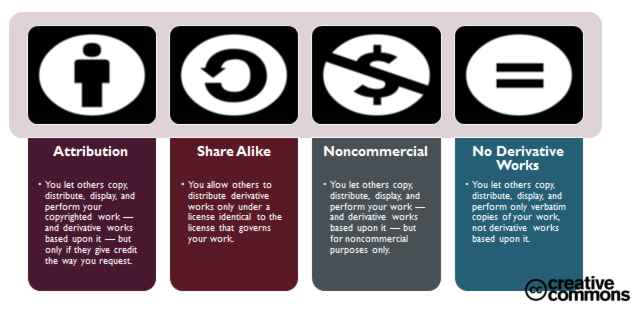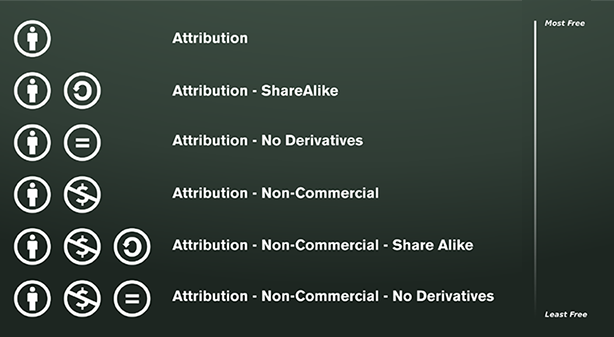Open Educational Resources (OER)
Although there are many definitions of Open Educational Resources (OER), all generally agree that they are teaching and learning materials freely available within the public domain for everyone to use. OER Commons provides a good working definition: Open Educational Resources (OER) are teaching and learning materials that are freely available online for everyone to use, whether you are an instructor, student or self-learner. Examples of OER include: full courses, course modules, syllabi, lectures, homework assignments, quizzes, lab and classroom activities, pedagogical materials, games, simulations, and many more resources contained in digital media collections from around the world.
Why Use OER? Some Student Thoughts on the Cost of Textbooks:
Those who most clearly benefit from using OER are the learners- both in cost savings and in increasing equal (and even enhanced) access to content. Learners can also benefit from an increased variety of resources, which can appeal to different learning styles. However, instructors can also benefit from OER by developing a more collaborative approach to teaching, through contributing one’s own resources as well as using existing resources. Additionally, contributing to OER can gain instructors additional professional recognition as well a means of reaching new learners.
Considerations
There are several factors to take into consideration when considering developing open educational resources:
- Student Access: Consider what device(s) students will use to access the materials, and will that create any barriers? Do the materials meet all accessibility guidelines?
- Sustainability and Maintenance: Using OER requires instructors to make sure links still work and materials are still current. Searching for adequate materials and planning activities around them can take significantly more time than if using a traditional textbook with recommended activities.
- Justification: Make sure that you select materials that align with your learning objectives and are necessary for the attainment of those objectives; there should be a clear reason for including all materials.
- Variety: Ideally, you should aim to incorporate a wide variety of resources and content, such as text, video, graphics, and methods for students to work interactively. Interactive components can be activities that require students to create, remix, evaluate, or simulate.
Copyright
The Creative Commons has created a licensing system to address Open Educational Resources. Please see here for more information: http://creativecommons.org/licenses/. The licenses allow content creators to retain copyright while at the same time allowing others to non-commercially copy, distribute, remix and build upon your work. Here is a summary of the licensing options available to you through Creative Commons:


Additionally, UNCG also maintains a site on copyright that should be helpful to you in both your teaching and research:
Where to Start
University Libraries
Jackson Library has an in-depth site on OER, located here: http://uncg.libguides.com/OER/whatareOER. In addition, the Library Liaison for your department can assist you with navigating the many resources available through the Library, including journal articles, e-books, and videos.
Instructional Technology Consultants
Your Instructional Technology Consultant can assist you with loading your course resources into Canvas, scanning documents and images, and advise on what kind of resources (text, video, etc…) might best convey specific learning objectives.
Digital Media Commons
The Digital Media Commons (DMC), located in the Library, has many multimedia resources at your disposal, including a 3D workshop and a professional video studio you can use to record your own videos.
Additional Resources:
- OER Commons– “We work with the finest producers of instructional content in the world and gather their best work together especially for you. Then we ensure the resources are carefully described and fully indexed because we want you to be able to find exactly what you need, when you need it.”
- The OpenCourseWare Consortium (OCWC)- “a worldwide community of hundreds of higher education institutions and associated organizations committed to advancing open education and its impact on global education.”
- Project Gutenberg Project Gutenberg is a collection of books that are in the public domain.
- Khan Academy Khan Academy is a not-for-profit with the goal of changing education for the better by providing a free world-class education for anyone anywhere. All of the site’s resources are available to anyone.
- MIT OpenCourseware Thecourses of the Massachussets Institute of Technology
- Open Yale Courses Open Yale Courses provides free and open access to a selection of introductory courses taught by distinguished teachers and scholars at Yale University.
- MERLOT The MERLOT (Multimedia Educational Resources for Learning and Online Teaching) collection is provided by the California State University Center for Distributed Learning and consists of tens of thousands of discipline-specific learning materials, learning exercises, and Content Builder webpages, together with associated comments, and personal collections, all intended to enhance the teaching experience of using a learning material. Additionally, The MERLOT Content Builder is an area of MERLOT available to registered MERLOT members. Registering is free. Registered users can create and publish their resources.
Special thanks to Beth Bernhardt in the Library for spear-heading the OER initiatives on campus.





